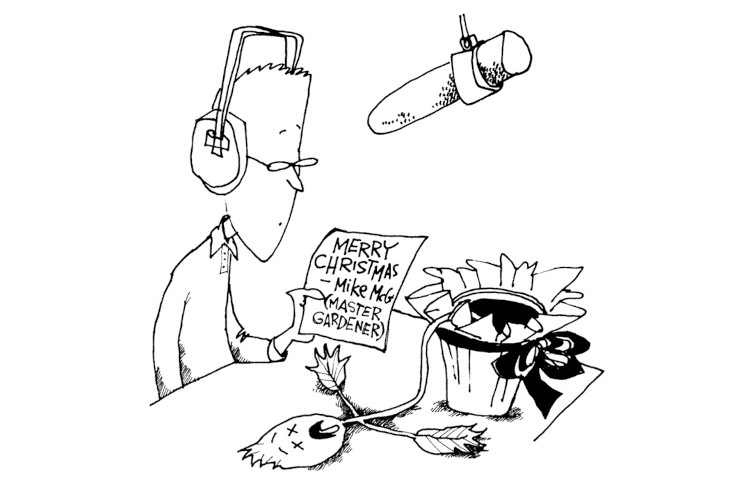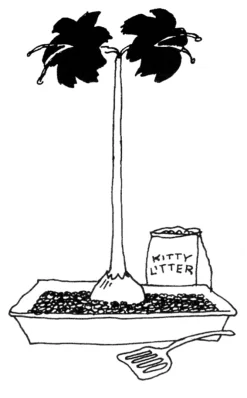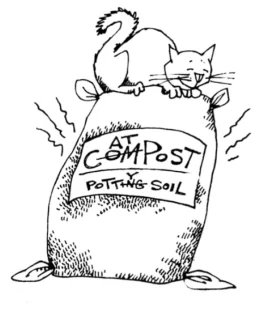
An Amaryllis is a beautiful winter flower with large, showy blooms that make it the perfect choice for gifting. Unlike cut flowers, an Amaryllis gift like Amaryllis bulbs are long-lasting and easy to care for, making them an ideal choice for anyone looking to add a touch of color and cheer to their home during the cold Winter months.
Poinsettias are the gift we think of most often when it comes to the holidays, but they don’t ship well, and Amaryllis bulbs are a better option for anyone looking to give a gift that will last well beyond the season. Amaryllis bulbs can be planted in any pot or container and require minimal care, so they are perfect for busy individuals who don’t have time to worry about keeping flowers alive and vibrant right away.
If you’re looking for a thoughtful gift that will stand out from the crowd, opt for an Amaryllis bulb instead of your usual bouquet or pot of poinsettias–your loved ones are sure to appreciate it!
Well, most of them, anyway. In my younger years, I had gotten an Amaryllis gift from my grandmother, and I didn’t quite appreciate it the way I would now. I let it sit in its box for at least two years before I found it in a cupboard, sprouting, and decided it deserved to live after all its trouble. So today’s piece, “The Amaryllis and the Pussycat” by Mike McGrath, was a nice reminder of my time with the Amaryllis bulb that could!
Enjoy More Gardening Humor
This story comes from our archive that spans over 30 years, and includes more than 130 magazine issues of GreenPrints. Pieces like these that turn gardening humor into everyday life lessons always brighten up my day, and I hope this story does for you as well. Enjoy!

The Amaryllis and the Pussycat
It all started with a Big Idea…
By Mike McGrath

It’s early December and I’m out driving when some folks at my public radio station call me with a Big Idea: Let’s send poinsettias to five stations that are on the fence about picking us up—they really like my weekly gardening show, but aren’t quite ready to buy a ring, station wagon, and gas grill yet.
“That’s great!” I respond. “I never thought the people in charge would spring to have flowers delivered!”
“Delivered? We figured we’d mail them.”
“Let me guess—one of the stations has to be in Syracuse.”
“No! Wisconsin, Minnesota…”
I briefly explain how small a sense of humor these tropical plants have about subzero temperatures (“It looks like we sent you what? No, there was a plant in there—honest!”) and suggest that amaryllis bulbs might work. And, as luck would have it, I have pulled into the parking lot of one of those big stores Paris Hilton said she didn’t know about to have this phone conversation safely. So I go inside and locate the seasonal ghetto that houses the Christmas stuff (soon to be replaced by Super Soakers and wraps that make beer cans look like Pepsi). No amarilii in sight.
But there is an Asian worker, who I arbitrarily decide doesn’t understand English. So I make a big round shape with my hands (which I later realize was more the size of a soccer ball than a flower bulb [“Crazy white man in store today want amaryllis bulb the size of child’s head!”]) as I adopt the Tonto/Tarzan style of speech used for all people who look foreign: “Bulb. Christmas plant. Am-are-ill-us. Big flowers. Tall.” My hands are now making giant tree shapes in the air.

At about the same time I realize that maybe the words “Do you have…?” should possibly precede some of these staccato Jeopardy clues, he points to a shelf above my head, nods, and then says, “These?” with what seems to be a fine grasp of the language I don’t appear to be doing all that well with.
I crane my neck to an angle I won’t be able to accomplish a few years hence and there they are—WAY up high. Another worker wanders up. I ask if they know how much they cost. The Asian guy says, “$3.97, I think.” The new guy says, “No, no, no! $3.93!” as if it was the difference between a quarter and $100 bill. My spotter clambers up and hands one down to Mr. Price is Right, who announces, “Yes! $3.93!” in a tone generally reserved for someone who has just made the final out in the World Series. Thankfully, he didn’t try to high-five me—although it was nice to be there for the high point of his professional career.
I take all the red and pink ones, leaving behind the whites. (White amaryllis are like a steak sandwich without onions—what’s the point?) When I get home I proudly call my elves, who respond, “Remember how you said they’d never pay for florists?”
“Yeah…”
“Guess what else they’re never going to pay for.”

This was actually fine by me. I needed gifts, and had started to wonder how even dormant amaryllis bulbs would fare on a Minnesota loading dock (“Not too bad out there today, eh?” “No, the acid in my car battery didn’t even freeze up yet!).”
I open a couple of red ones. Most have a little green shoot or two showing, and a few are big enough to maybe be in bloom for Christmas if I pot them up right away. I open the first pink box, drop it on the floor, and let out a yelp.
“What’s wrong?” yells my wife from the next room.
“Eeeeeuuuu! A bird got into the box! It’s filled with feathers!”
“Oh gross…”
I open a second pink. “Eeeeeuuuu again! Another bird! One with…with…”
“What? Eggs? Chicks? Fleas?”
“Pistils.”
“They shouldn’t let people like you in stores.”
Maybe the pink ones were older. Maybe different colors behave very differently. Or maybe somebody up there realizes that automatic breathing was invented just for me and makes sure to slam good story material into my forehead four times a year. Whatever the reason, all the pink ones had bloomed in their boxes. Mole flowers! (I thought they were kind of cute, but my family turns out to have an unnatural fear of ghostly albino plants.)
I pot up the non-Haunted-Mansion-of-Horticulture red ones, and decide to mix some compost with the peat and perlite they came with so they’ll rebloom (maybe) without the giftees having to feed them.
I had recently emptied all my spinners, tumblers, and drums of their finished compost for the season (yes, there’re lots of rides for organic matter in my Disneyland of Rot!), and after feeding everything, had a five-gallon bucketful left over. I bring said bucket into the basement to defrost, ignoring the yowling complaints of our kitty cat, who doesn’t like going outside when it’s below 75°. “You’ll get your indoor litter box, furball! But first you have to bring me the head of the Wicked Vole of the West!”
The next day I awake to a foot of snow. I drag my son Max outside to help me clear the driveway for the cars. I work for an hour on my side of the vehicles, come around to see how much he’s done and find his lifeless face pressed into a big drift on the side of the van!
“Max! Oh my God—what happened? Are you all right?” How long has he been like this? What a Bad Dad: My son falls face-first—upright, which even in a blind panic I find interesting and somewhat suspicious—into the snow-covered side of our van and I don’t even notice! “MAX!”
He pops back out: “What?”
“What?”
“Hey, cool! How long was I in there?”
He’s 13. Or is that redundant? “I’ll kill you!” I yell now that I know he’s not dead. “We’ll never get done!”
But then I hear the sound of my neighbor’s old Ford tractor. In minutes he clears a path in front of the cars and the mailbox for us.
It’s great—he plows me out in the winter, and I start their garden plants in the spring. But now, walking back into the house five hours to the good, I think That’s not enough. I was planning to give him an amaryllis (a nice one, not a Night on Bald Mountainer) for the holidays, but what the heck—I’ll give him one now and something else for Christmas. (It’s easy to feel generous when you’re not outside wondering which mound is the Subaru…)
So I go down to the basement, avoid those accusatory feline eyes (“Go outside! It’s really white kitty litter!”), and pot up a nice amaryllis, adding compost from the now-thawed five-gallon bucket. I am about to slush next door with my gift when I realize the noise I’ve been looking around for the source of is my stomach saying I haven’t had lunch yet. So I put the plant on the dining room table, where my daughter Amanda is busy working on her freshman High School Science Project. (I made a sloppy wet moon out of paper maché for mine; she’s building a working cyclotron out of 100 feet of garden hose and some smoke detectors.) “Daddy,” she calls into the kitchen, “what smells like kitty litter?”
“Your brother’s breath? My writing…?”
“No! Something smells like kitty litter out here. I think it’s one of your plants.”
“You’re nuts.”
“Well, yes—but I think one of your plants smells like kitty litter.” She goes to ground like a retriever who knows there’s a dropped mallard somewhere in the room. “Here!” She yells, pointing at the newly potted-up bulb that, but for hunger, would be on our neighbor’s table by now.
I pick up the plant, stick my nose into the pot, and, being a man and therefore sure of all things without need for superficial stuff like facts or evidence, take a big whiff of what I know will be the wonderful really earthy smell of well-made compost…
“Eeeeeeeuuuuuuuu!”

Seems like our [bad word] cat noticed that big bucket of nice fresh compost and kindly decided to naturally increase its nitrogen content for me. (“Go outside? I think not!”)
The compost bucket gets covered, the kitty gets her litter (MUST they look so smug?!), and my neighbor gets a newly soiled (make that UN-soiled) plant.
“Hey, that’s great,” he says. “Is it scented?”
“Not any more,” I reply. ❖
By Mike McGrath, published originally in 2017-18, in GreenPrints Issue #112. Illustrated by Signe Wilkinson

Does this story remind you of one of your own? Have you ever gotten or given an Amaryllis gift? Leave a comment and share it with us!




Whenever I buy amaryllis for gifts. I usually buy at least one for myself! That way I can see what I gifted to my friends and family.
My friend brother’s friends send her Cape Cod chicken pot pies and amaryllis each year for Christmas. My friend quickly gives the pot pies to her neighbor and puts the flowers in her basement never to be seen again,